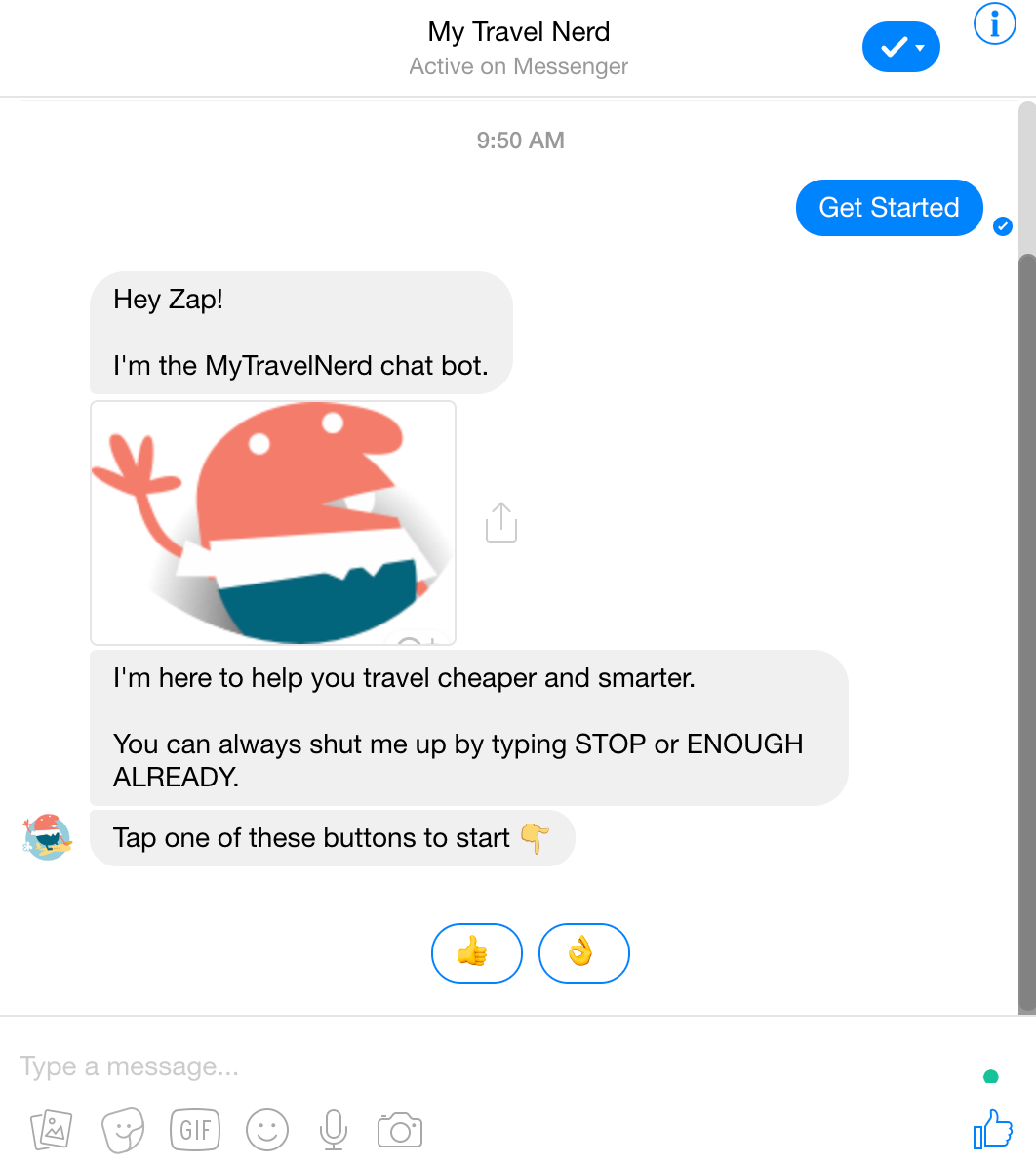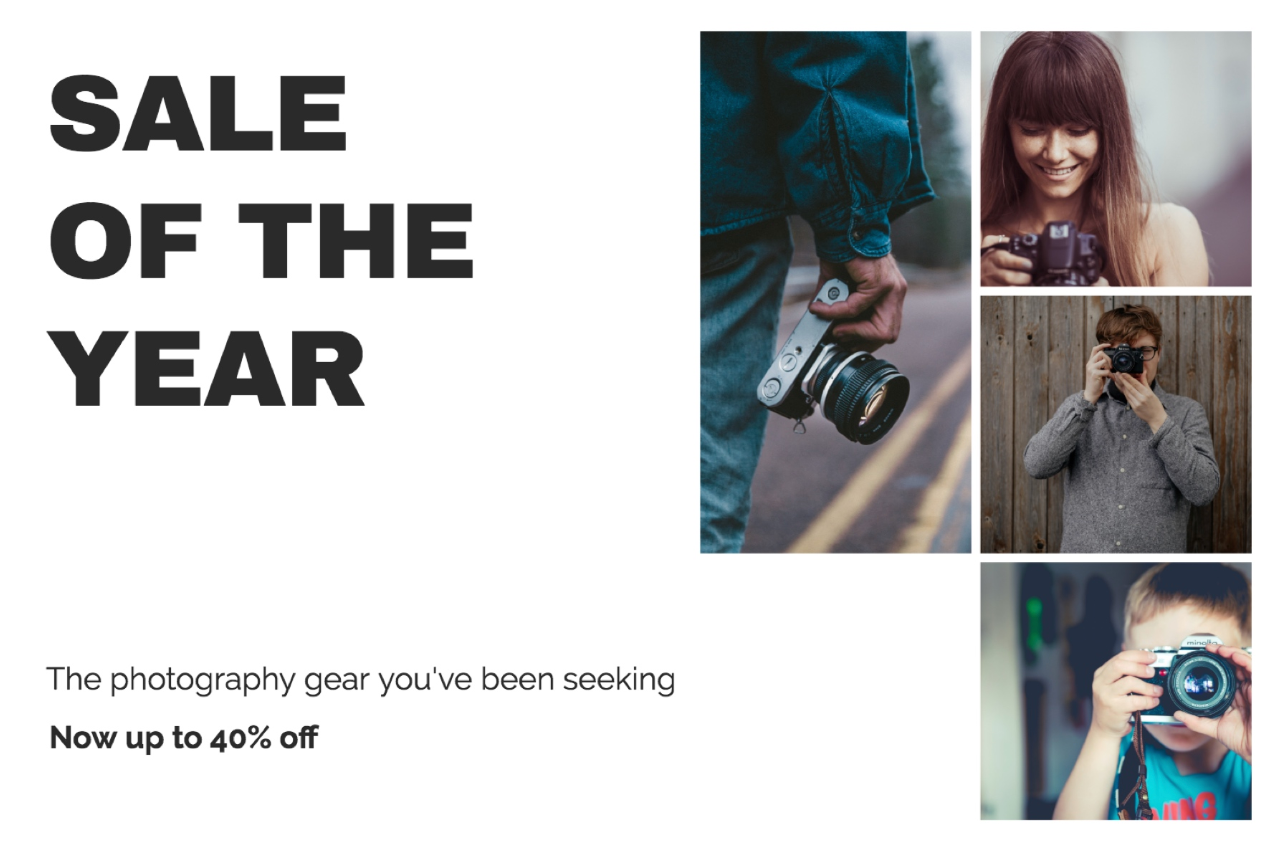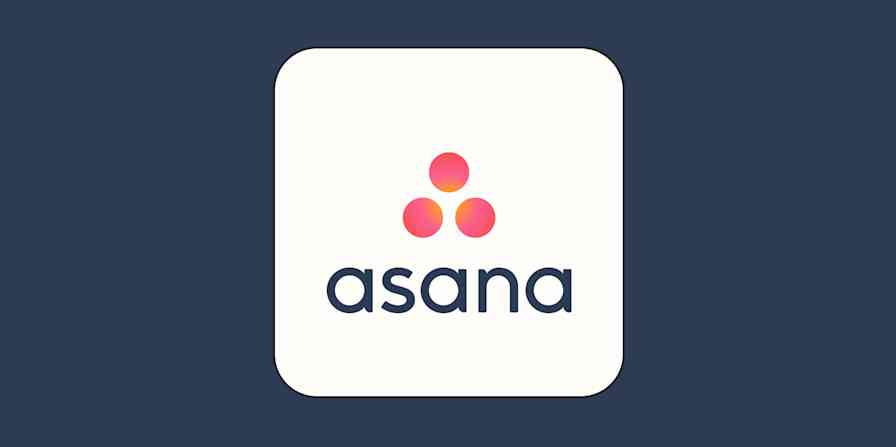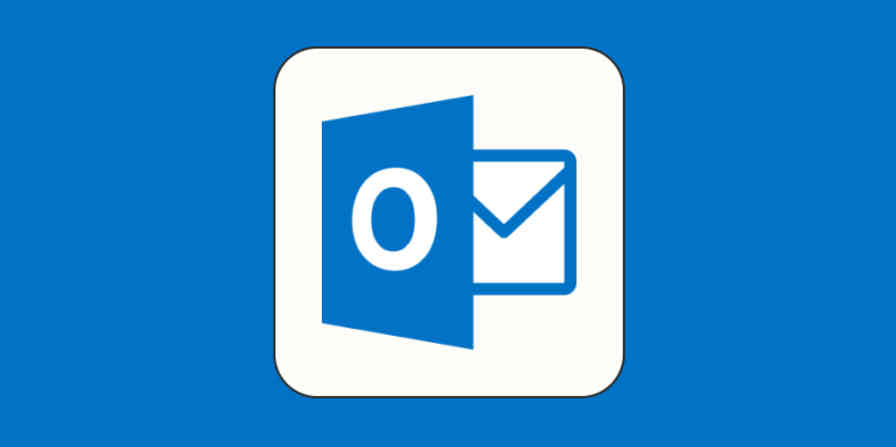Facebook lead ads are a popular, GDPR-compliant way to gain leads that opt in to be contacted by your business. And for good reason: two-thirds of adults in the U.S. are active Facebook users, and lead ads are particularly effective at gathering data from these users, since they're pre-populated with users' information.
Of course, as any salesperson will tell you, simply acquiring leads isn't worth much—unless you nurture them. That is, you need to turn those leads into sales. But if you follow the same strategy as everybody else, you won't stand out. To catch customers' attention, you need to try something different. Here, we'll present 10 unique ways to nurture your Facebook lead ads audience.
Follow Up with a Facebook Chatbot
Best for segmentation

Facebook chatbots provide a powerful way to engage with your customers, and they're surprisingly easy to set up and manage. Instead of sending a 400-word follow-up email to your new leads that answers every question they might have about your product—and many they don't—you can create a custom choose-your-own-adventure-style chatbot responder. Because they live in the same ecosystem, they're the perfect way to follow up on Facebook lead ads.
At their core, Facebook Messenger chatbots "take over" the messaging for your product's Facebook page. If a user sends you a message on Facebook, your bot will automatically send a customized response. User chats and responses are then stored within the chatbot app itself and can be surfaced later or integrated with an external database or CRM. For example, a chatbot for your meditation app might ask users, "What's your biggest challenge with meditating?" Then you can give users customized help, content, and sales pitches based on their response.
Another benefit of chatbot conversations: They let you segment your audience based on how they respond to chat questions. In the case of a meditation app, you could segment "first-timers" and "experienced meditators" based on an initial question asking about the user's experience level.
Not sure where to get started building your own chatbot? Check out ManyChat (from $10/month). You can play around with their free trial, and if you decide to launch, they have a helpful feature that lets you automatically follow up with Facebook engagers. I use ManyChat for travel deals company, MyTravelNerd, but options abound: You might also consider Chatfuel, Microsoft Bot Framework, or Massively.
If you're having trouble hooking customers by email, consider a chatbot. They provide a fun, personalized way to engage with—and segment—your growing audience.
Quiz Your Audience
Best for B2C leads
Unlike surveys, which often require bribing users with prizes or coupons, well-built quizzes can provide the same useful data and delight customers at the same time. They're compelling to audiences, and they still help us learn more about our customers.
Admittedly, plenty of companies use quizzes as lead generators, so you'll need to make your quiz unique in order to stand out. Try to think of quizzes you'd actually want to take ("How much do you really know about fashion?") rather than ones that fit your segmentation needs ("What kind of pants do you like to wear?").
Quizzes work especially well for Facebook lead ads if they continue a question or theme posed by your original ad. For example, if your ad asks "Want cheap flights out of LAX?" then your quiz might be "How many of these LAX travel secrets do you know?"
If you've never built a quiz, Outgrow (from $25/month), Riddle (from $15/month), and Fyrebox (free for up to five leads/month) all offer a variety quiz templates to start from.
Send Retargeted Video Ads
Best for visual-friendly consumer products
Signing up with a lead ad form is really just a signal of intent: This customer is somewhat interested in what you're offering. But you still need to sell them, which is why we're recommending that you serve a video ad to customers who have already engaged with your Facebook lead ad.
Many of your leads will likely never open your welcome email, which means you have two options: Give up hope of reaching these customers, or retarget them with a mid-funnel video ad.
Knowing that these customers are interested in your product or service gives you license to have fun with these retargeted ads (e.g., "Don't pretend you don't love our swimwear...") It also gives you a low-cost way to target your most promising audience.
Naturally, video ads work best for visually appealing products like clothing and gadgets. But even unsexy products can do well in video. If you already have a social ad campaign, consider retargeting your Facebook lead ads leads.
Invite Leads to a Private Slack Channel
Best for tech-savvy customers
Although you might associate it with workplace communication, Slack is a powerful tool for engaging with any community. And with the information collected from Facebook lead ads, you can provide a personalized experience in the Slack channel itself—inviting leads to channels for specific interests, geographic regions, or however you segment your customers.
Inviting new Facebook lead ad users to join your Slack channel does two things: It makes them feel included as part of a special group, and it gives them the opportunity to engage with you—and each other—in a structured way.
If you're a digital marketing agency, you could create a #marketing-advice channel and keep users updated with your events. Then, you might hold a live AMA and answer their questions right there in the Slack channel.
And because Slack is so automation-friendly, you can use it to do almost anything: blast members whenever you add a new product to your store, remind channel members about upcoming events, and more.
Send Slack channel messages for new Google Calendar events
Remember: Although Slack has become nearly ubiquitous in tech workplaces, many people still don't know what it is. Slack channels are therefore best for tech-savvy customers or B2B marketing.
Create a Branching Content Funnel
Best for content marketers
You've done a great job at content marketing, and you've amassed heaps of library content in your archives. Sure, you could blast new leads with random assortments of your best content, but most of it won't be relevant. Instead, try creating branching content funnels that match your leads to the most appropriate content.
Think of it as lead scoring, but instead of scoring on a single variable such as "interest," you're scoring across the various types of content you provide. Some of the initial segmentation can come from the information you collect from the Facebook lead ads themselves. For example, you might send certain content to people who identify as female.
But then you can further target content based on your leads' engagement with it. Say you have a wellness blog with content related to nutrition, yoga, and parenting. You could score each of your leads on those categories depending on which content they engage with—through email opens and clicks. You can automate this scoring and messaging within many email marketing apps, including MailChimp, Constant Contact, and Drip, or you connect click and open data to an outside database or CMS and automate the scoring there. For example, users who show interest in yoga by opening and clicking on emails related to yoga will get tagged with that interest and subscribed to an automated campaign full of yoga-related content. You can make this scoring and automation as simple or complex as suits your needs.
Branching your content marketing in this way ensures the right users see the content that matters to them. It also keeps you from bombarding your new customers with content they don't care about, which can lead to massive unsubscribes.
Send a Personalized Welcome Video
Best for large-ticket sales or further down your funnel
Personalized welcome videos let your customers see the humans behind your brand, which garners trust. And they're especially effective for Facebook lead ads, which give you very little opportunity in themselves to share your brand's personality and message.
For example, I send personalized welcome videos to users who sign up for a free trial of our premium subscription. Click here to see what one looks like.
Anecdotally, I've found that users who receive these videos are (a) less likely to cancel their free trials and (b) more likely to engage with the brand down the road, including things like filling out surveys. Plus, they're fun to do. I use a personalized video service called Bonjoro (from $25/month).
Any time you get a new lead from Facebook lead ads, Zapier can send you a notification in Bonjoro, prompting you to make a new video:
You can then continue nurturing the lead by automating Bonjoro further. Zapier can trigger actions in your other apps whenever someone watches or otherwise interacts with your Bonjoro.
Of course, creating these videos takes time and energy, so if you're cramming the top of your sales funnel with thousands of leads, you'll probably want to narrow down your welcome video audience based on some post-signup action (like free trial subscribers). But if you're in B2B sales or even B2C with large-ticket items, like real estate, personalized videos can make a huge impact on your sales funnel.
Send a Postcard
Best for small, high-value lists

You're probably used to digital marketing, but snail mail—when done right—is a great way to stand out from the competition and get leads' attention. You can collect a lead's home address as part of a Facebook lead ad form. This extra step will likely reduce your signup rate, but you'll know you're working with more qualified leads. For big-ticket items, it's worth a try.
MailChimp, the popular email marketing software, actually provides a dedicated postcard service that uses your existing email list. All you have to do is design the postcard, decide how many users you want to send it to, and voilà, MailChimp does the rest (for about $0.75/card). Other direct-mail apps worth checking out include Mailjoy (from $0.90/card) and PostPilot (from $0.69/card).
Your postcard could be a sale announcement for your online store, a clever cartoon explaining the benefits of your SaaS software, or a personalized introduction from an account manager. Whatever works for your business.
Again, you shouldn't send postcards to all 100,000 leads who sign up through Facebook. But if you're building a smaller, more targeted list, or engaging users further down your sales funnel, snail mail could make you stand out from the crowd.
Create an SMS Bot
Best for big-ticket sales
If you've been in the market for a house or condo in the last few years, you've probably encountered an SMS bot. Realtors have realized that sending automated text messages to new leads is a lot easier than reaching out directly. But there's no reason this strategy should be limited to real estate. And it's perfect for Facebook lead ads where you're capturing a phone number with what Facebook has on file—no extra effort required from the user.
Many companies send a simple onboarding SMS and then have a sales rep follow up, but there's no reason you can't automate an SMS bot to the same extent as you would a Facebook Messenger bot. In fact, you can use the same segmentation and engagement strategies as you would from the chatbots.
Not sure where to start? Connect your Facebook lead ads to Instabot (from $49/month) to build your bot, and connect it to Twilio (pay-per-SMS) to manage texts. Here's a Zap to get you started:
Dump Your Cold Leads
Best for large email lists with low conversion rates
Facebook lead ads are attractive because of how quickly they can fill the top of your sales funnel. But all this quantity does not guarantee quality, and you're bound to end up with a lot of unresponsive leads. These leads can cost you money (e.g., email service subscriber fees) without providing any return on investment. What should you do?
Try to break up.
The idea is deceptively simple: If you've got a bunch of cold leads that aren't engaging with anything you throw at them, send them an email with a subject line like, "It seems like we should break up." In the body, explain that you clearly aren't meant for each other and you should probably quit talking. Then give them an opportunity to stay on your list by clicking a link.
What qualifies as a cold lead depends on your industry, but if a customer hasn't engaged with your communication for over nine months, they're probably not going to start—without a prod.
A few companies have tried this strategy on me, and, even though I know what they're doing, I almost invariably fall for it. Why? Because we all hate being rejected.
Sure, this strategy a bit manipulative. But if you're paying for a large email list, you have absolutely nothing to lose by trying to dump your unresponsive leads. In fact, you could save some money by reducing your list. And best case scenario, you re-engage a few cold leads.
Most of the best email marketing apps have automation features, so you can create a set-it-and-forget-it campaign to dump your cold leads.
Send a Truly Personalized Welcome Email
Best for brands with clear customer segmentation
"Personalization" has been at the tip of every digital marketer's tongue for ages, so it's surprising how few email campaigns are truly personalized. When was the last time you opened a welcome email that felt like it was being sent to you and not thousands of other people?
Facebook lead ads provide great opportunities for personalization thanks to the wealth of data Facebook has on its users. You can collect users' home city, gender, and even job title without asking them to complete extra fields. That means your welcome email could say something like "Guys in Tacoma love our doughnuts!" instead of "Everybody loves our doughnuts!"
If that sounds daunting—automate. Connect your Facebook lead ads to your CRM or email marketing platform and create an automated personalization onboarding campaign:
Subscribe new Facebook Lead Ad leads to a Mailchimp list
Add or update ActiveCampaign contacts with new Facebook Lead Ads leads
Copy new lead responses from Facebook Lead Ads to a HubSpot form
Create or update Keap Max Classic contacts from new Facebook Lead Ads leads
Create contacts on Constant Contact for new Facebook Lead Ads leads
This strategy is particularly effective for brands with clear customer segments, such as "urban mothers" or "tech gurus," since it lets you market to these segments' interests right off the bat instead of trying to glean them through other methods. Conversely, if your customers are more heterogeneous, you might be okay sticking to a single onboarding email.
Gathering prospects with Facebook lead ads is easy. But nurturing these leads requires a more specific, unique strategy, since customers get bombarded with the same marketing shtick from hundreds of companies. Applying cookie-cutter lead-nurturing strategies will waste all the personalized information that you've gathered from Facebook lead ads. Of course, the best nurturing strategy depends on your business. Try out a few options to see which ones show the most promise, and then run with whatever works for you.
New to Facebook lead ads? Take a look at some of our other resources:
Image of postcard via Mailjoy.




